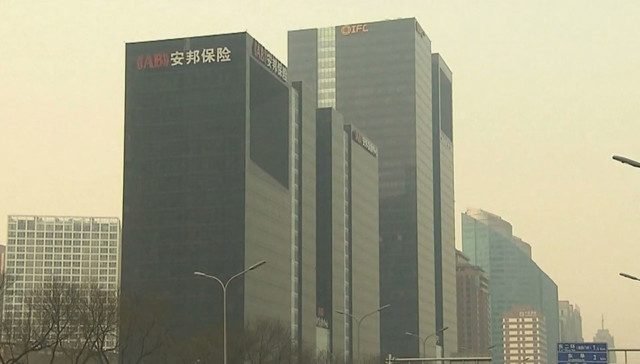China’s economic transformation has turned companies virtually unheard of even just a few years ago into some of the biggest in the world.
But the amount of debt they’ve amassed in the process has been causing concern about the country’s overall economic health.
So how much does it matter?
CGTN’s Owen Fairclough has more.
The Four Seasons is one of Washington’s luxury hotels.
It’s owned by Anbang, one of China’s biggest companies, and it’s a symbol of China’s growing appetite for investing in some of the best assets the West has to offer.
But that buying spree has created an unprecedented pile of debt.
It was too much for insurance conglomerate Anbang, whose multi-billion dollar hotel acquisitions included the famous Waldorf Astoria in New York.
Fearing it was on the verge of collapse, China’s government took over Anbang. And for some, that’s a sign of trouble.
“Debt levels in China have made many people argue that it’s facing an imminent financial crisis,” Yukon Huang, Asia program senior fellow at the Carnegie Carnegie Endowment for International Peace, said.
China’s total debt is now around 260 percent of economic output—way beyond the numbers for Greece, Ireland and Portugal when they were bankrupted by the global financial crisis.
But look behind that headline figure and the situation is much more nuanced and particular to China.
“Borrowings of households aren’t particularly a big issue. Local governments have borrowed a lot, but they had very low debt levels in the past. So even though it’s risen, that’s not the issue. It’s the debt of the firms that duly distinguishes China,” Mr Huang explained.
Indeed, strip out the corporate debt and the picture looks much healthier for China.
The government insists it can manage the debt load. And it can put its money where its mouth is because it’s the ultimate guarantor of the biggest state-owned banks.
It’s also reining in over-stretched companies by supporting a program that exchanges debt for equity and dispose of loans in danger of being unpaid to improve their balance sheets.
And China isn’t alone. Debt is surging around the world – nowhere less so than the U.S.
The U.S government has briefly shut down twice this year, because it hit a debt ceiling that had to be raised before the business of running the country could resume.
So with the world’s two biggest economies now so heavily in the red, how concerned should we be?
“Eventually at some point in time, if this debt continues to mount, countries start to lose that flexibility and that’s what you saw in Europe with countries like Spain and Greece or during the Asian financial crisis,” says Mr Huang.
“So it’s an issue we’re monitoring. But it’s not reached the stage where we can see what I could call a financial crisis emerging.”
Ten years after too much debt nearly brought down the global financial system, the hope is that this time the numbers aren’t too big to fail.
Jack Perkowski discusses China’s debt risk
CGTN’s Rachelle Akuffo spoke to Jack Perkowski, managing partner of JFP Holdings, about China’s debt risk.
 CGTN America
CGTN America

